11 Best first-time Europe itineraries for 1, 2, or 3 weeks
Europe is going to be very busy in the summer of 2024 as the world is back to normal and travel demand is higher than ever. One other key factor is that most European currencies are still hovering at lower levels historically compared to the US dollar, which means that Europe will feel somewhat cheap again this year. In fact, according to our World Backpacker Index, European cities like Lisbon, Madrid, and Munich are about 30% cheaper to visit than Boston, Chicago, and New York City. In other words, flying to Europe might seem expensive, but most things will be cheaper once you get there compared to the costs of visiting a large US city.
Below you’ll find 11 of the most popular and best itineraries for a first visit to Europe. Your first visit is not really the time to be different or creative, and the famous destinations tend to be popular for a reason. In other words, it’s kind of silly to visit, say, Bulgaria, if you’ve not yet been to France or Italy. I lay out the best options along with how long to stay in each place as a general guide. I also discuss Mediterranean cruises, which can actually be an amazing way to see a lot of Europe on your first visit, especially if you don’t like going back and forth to train stations and airports every 2 or 3 days.
For a bit of fun you might be interested in the cheapest 5-star hotels in Europe, which start at US$80 per night for really nice hotels. It helps show that if you choose some of the cheaper cities, you can treat yourself to some luxury that you can’t afford in most other places.
This article was last updated in March, 2024.
There are 11 starter itineraries described in detail below
- Classic London and Paris
- England and Scotland
- Paris and Italy
- Mediterranean cruise
- France, Belgium, and Netherlands
- Paris and elsewhere in France
- Italy
- Spain
- Germany
- Switzerland
- Best of cheap eastern Europe
For each itinerary there are suggestions of other destinations that are easy to add on to the main cities.
Note: This article was most recently updated in March, 2024
Building the best itinerary for your first trip to Europe
Below there are 11 popular itineraries for one week in Europe. If you’ve only got a week then choose one of them and assume you’ll return again to conquer more of this amazing part of the world. If you’ve got more time then you can choose from some of the top add-on suggestions for each one.
Start in the most famous cities
Your first visit to Europe is no time to try to be different or edgy. I recommend that you focus on these 5 great cities before you start branching out into cheaper or more obscure places.
Keep your travel days to a minimum
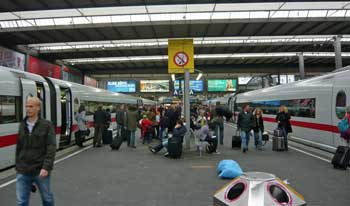
Spend 3 (or 4) nights in almost every major city
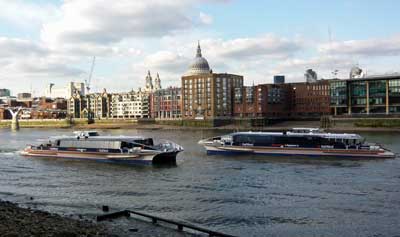
So many first-time visitors are initially planning on spending only 1 or 2 nights in major cities that I wrote a detailed explanation of why 3 nights is ideal for almost all European cities, even if you want to see as much as possible.
3 (or 4) nights will be enough for any city on your first trip
Most first-time visitors are tempted to move too quickly, but it can also be a mistake to move too slowly. It’s really amazing how much you can see in two full sightseeing days. If you spend too long in one city you’ll end up seeing things that are way down your list, while you could be in another city seeing things at the top of your list there.
Choose cities that are easy to reach from each other
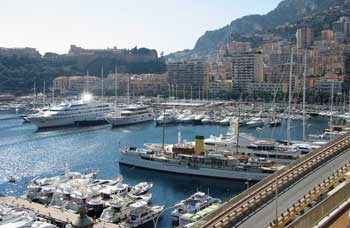
For your first trip it’s best to visit cities that are no more than a 5-hour train ride apart.
Choose cities that are connected by reasonable train rides rather than flights
To build on the point above, finding cheap flights within Europe is easy, but train travel is about a million times more enjoyable and less stressful. You’ll enjoy the train rides almost as much as the cities, so focus on places that are within 5 hours of each other by train.
Start with one of the classic itineraries below, and then add to it if you have more time
If you only have 7 days then you’ll find a list below of classic itineraries that are well-suited to a first visit to Europe. Hopefully you have more than 7 days though, and if you do you can add in one or more of the suggested add-on cities to build an itinerary that appeals most to you.
Best 1-week itineraries for the first time in Europe
Itinerary 1: Classic London and Paris
Fly into either city and take the 2-hour Eurostar train between them
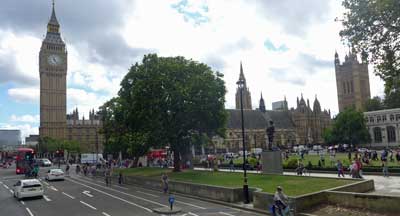
London highlights
- Big Ben and Parliament
- Westminster Abbey and St. Paul’s Cathedral
- Tower of London and Tower Bridge
- West End shows (Broadway equivalent) and classic pubs
- Buckingham Palace and Windsor Castle
Paris is actually far more beautiful than London and the food is famously much better as well. Since Paris gets so many tourists from non-French speaking countries, it’s easy to get by on just English, and the Metro system makes it fast and easy to get around. The architecture of both cities is amazing from the Tower of London, Big Ben, Westminster Abbey to the Louvre and the Eiffel Tower. These cities each pack a huge punch and they are very different from each other as well. Actually, England is arguably the best choice for your first trip to Europe.
Paris highlights
- Eiffel Tower
- Louvre Museum and Museum de Orsay
- Arc de Triomphe and other monuments
- Montmartre neighborhood and Sacré Coeur Cathedral
- Probably the world’s best affordable restaurants and wine
Best add-ons to London and Paris
- Edinburgh (2 or 3 nights, from London)
- Amsterdam (2 or 3 nights, from Paris)
- Bruges and Brussels (2 nights, from Paris)
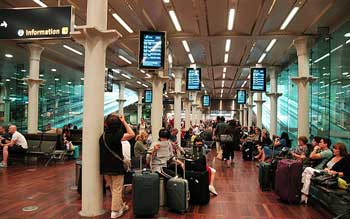
>>>Best one-week London and Paris itinerary in detail
>>>Check London hotel deals
>>>Check Paris hotel deals
Itinerary 2: England and Scotland
- London (3 or 4 nights)
- York (1 night)
- Edinburgh, Scotland (2 or 3 nights)
- Inverness, Scotland (2 or 3 nights)
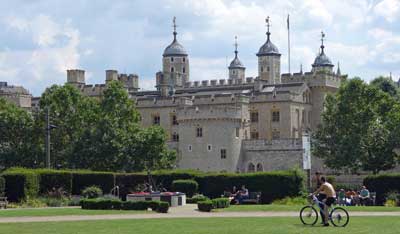
York is a small Roman city with intact city walls and one of the most famous cathedrals in Europe. Edinburgh is not only the capital of Scotland, but it’s easily the second most interesting city in all of Britain. If your time is short, skip York and spend more time in Edinburgh.
If you prefer to focus on the south of England on your first trip then the best option is to go to Bath or nearby Bristol after London. Bath is another of England’s top destinations and it’s a gorgeous city that has been a spa resort for many centuries. It’s also reasonably close to Stonehenge. You can also easily get to Cornwall in England’s southwest corner from Bath, and that’s a whole different and fascinating experience (with nicer weather than up north).
If you’ve got more than a week and want to spend more time in Scotland, especially in the summer months, the place to head to is Inverness. It’s a small town that is considered the gateway to the Scottish Highlands, but it’s an interesting and charming place on its own. You can take day-trips by bus to the highlights of the Highlands including the Isle of Skye and Loch Ness. Between you and me, it’s better to minimize time in Loch Ness or skip it altogether because it’s not one of the more photogenic parts of Scotland and the monster has always been a hoax.
Travel times between the recommended places
- London to York by train: 2 hours
- York to Edinburgh by train: 2.5 hours
- London to Edinburgh by train: 4 hours
- Edinburgh to Inverness by train: 3.5 hours
- London to Bath by train: 85 minutes
Best add-ons to England and Scotland
If you think you want to spend your whole trip in Britain you should have a look at our article on the best itineraries in England, Scotland, and Wales.
>>>Check London hotel deals
>>>Check Edinburgh hotel deals
Itinerary 3: Paris and Italy
- Paris (3 or 4 nights)
- Venice (1 night)
- Florence (2 or 3 nights)
- Rome (3 nights)
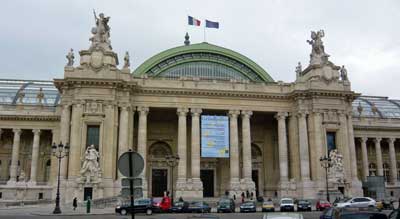
From Paris you can easily fly to Venice (or nearby Treviso) where you should try to spend about 24 hours. Venice is small enough to see in a full day, and so crowded that most people are satisfied to leave after that day. The key is to stay in the main part of the main island so you can enjoy Venice before the cruise passengers and day-trippers arrive, and also after they leave for the day. Two nights in Venice would not be wasted time, and it’s possibly the most gorgeous city in the entire world, but you can see the best of it in a bit over 24 hours.
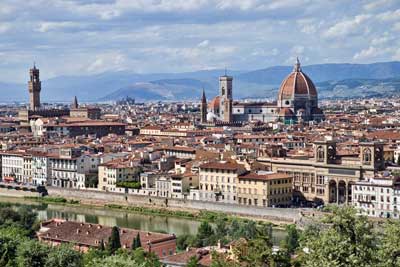
Rome also lives up to the hype and spending a day in the Vatican City will be a highlight even for non-Catholics, but it’s also a crowded and busy city so three days is usually enough for most people. Similar to Paris, Rome is an unusually beautiful city from almost any angle when you are in the historical center. You’ll walk through a stunning piazza (town square) and then turn a corner and you’ll see gorgeous buildings or public statues that are as nice as anything in the museums. Seriously, it’s worth a visit.
Paris to Venice flight: 1 hour 35 minutes
Venice to Florence by train: 1 hour 53 minutes
Florence to Rome by train: 1 hour 16 minutes
You can of course instead fly from Paris to Rome and then go north to Florence and then to Venice and fly home (or back to Paris) from there, and it would be just as enjoyable.
Best add-ons to Paris and Italy
France
- Nice/Cannes/Monaco (2 or 3 nights)
- Avignon (2 nights)
- Bourges (2 nights)
- Bordeaux (2 nights)
- Aix-en-Provence (2 nights)
- Reims (2 nights)
- Dijon/Burgundy (2 nights)
Italy
- Milan (1 or 2 nights)
- Lake Como (2 nights)
- Siena (2 nights)
- Cinque Terre (1 night)
- Naples/Sorrento/Amalfi Coast/Pompeii/Capri (3 to 5 nights)
- Sicily (3 to 4 nights)
>>>Much more information in this article about the best France and Italy itineraries
>>>Check Paris hotel deals
>>>Check Venice hotel deals
>>>Check Florence hotel deals
>>>Check Rome hotel deals
Itinerary 4: Mediterranean cruise
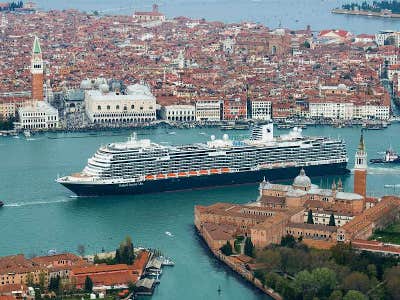
In spite of the reputation of cruises to be floating buffets, they can actually be an excellent way to visit a great number of amazing European cities in a short time. The ship typically is in port from the early morning until mid evening, often giving you the opportunity to have dinner in the city (unlike Caribbean cruises). Better still, the cruise ports are often near the center of town, so you can just walk off the ship and do sightseeing on foot or by public transportation.
Mediterranean cruises usually start at 7 nights but can go up to 3 weeks, which can provide an amazing tour of the entire region without having to pack and repack your bags more than once. They also can provide excellent value, especially compared to the price of taking trains or flights and finding new hotels in every destination.
Most popular Mediterranean departure ports
Barcelona, Spain – It’s an easy port to reach. Ships generally go from Barcelona with stops in France and then Italy.
Rome (Civitavecchia), Italy – The port isn’t very close to Rome, but it’s easy to get back and forth. Ships go west to France and Spain as well as south around the tip of Italy and then on to Croatia, Venice, and to Greece.
Venice, Italy – The cruise ships no longer dock close to the best tourist areas, but it’s easy enough to visit Venice for a day or two before boarding a ship. Ships starting in Venice go south and then head west and to Rome and then to France, or they go south to Croatia and then head east to Greece.
Athens, Greece – The cruise port of Piraeus is just south of Athens and easy to reach. Ships from Athens usually head west towards Croatia, Italy, France, and Spain, but there are also ships that visit Greek islands and Turkey.
>>>Check for deals on Mediterranean cruises
Alternative to consider: a river cruise
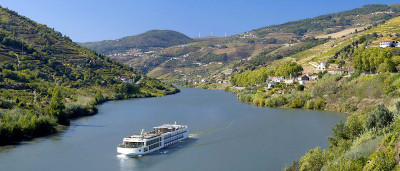
Amsterdam, Budapest, and Prague are some of the most popular river cruise ports, but there are dozens of others including many smaller towns in France where few other tourists will be when you stroll off the ship. There is little or no entertainment on the river cruise ships, but passengers don’t miss it because the entire day and into the evening is spent just steps from local cultural offerings and restaurants.
>>>Check for Europe and river cruise deals
Itinerary 5: France, Belgium, and Netherlands
Paris to Brussels: 1 hour 22 minutes
Brussels to Bruge: 58 minutes
Bruges to Amsterdam: 2 hours 45 minutes
Amsterdam to Paris: 3 hours 17 minutes
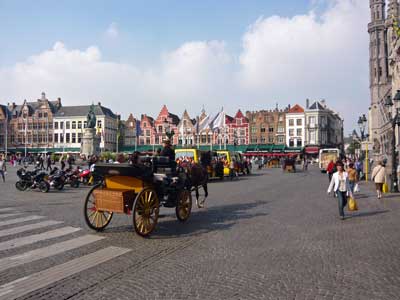
Spending 4 nights in Paris and 3 nights in Amsterdam would be a great trip, but if you want to see something else you’ve got a couple options in between. My advice is to spend an afternoon looking around the Grand Place (main square) in Brussels and then hop a 58-minute train ride to Bruges for a night or two. Brussels isn’t a great tourist city, but Bruges really is so it’s a better option for most people. Whatever you choose out of this group, you can be back in Paris on another high-speed train for your flight home.
Best add-ons to France, Belgium, and Netherlands
- Luxembourg City (1 or 2 nights)
- Cologne, Germany (1 or 2 nights)
- London (3 or 4 nights)
- Interlaken, Switzerland (2 or 3 nights)
>>>Check Paris hotel deals
>>>Check Bruges hotel deals
>>>Check Amsterdam hotel deals
Itinerary 6: Paris and elsewhere in France
- Paris (3 or 4 nights)
And a choice of:
- Nice/Cannes/Monaco (2 or 3 nights)
- Avignon (2 nights)
- Bourges (2 nights)
- Bordeaux (2 nights)
- Aix-en-Provence (2 nights)
- Reims (2 nights)
- Dijon/Burgundy (2 nights)
- Normandy (2 nights)
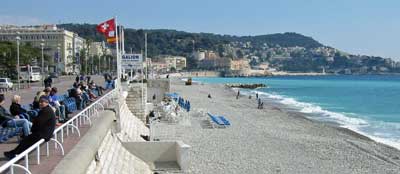
While Nice is a wonderful tourist city for a look at the French Riviera, the other larger cities of Lyon and Marseilles are probably better saved for a future trip because they are light on key sights compared to many smaller towns. Wine lovers can rent a car or take trains into Bordeaux or Burgundy. Since you can get between most of these towns by train in 2 hours or less, spending only 2 nights in each one is a reasonable option if you want to see a lot in a short time.
Normandy is an interesting choice and easy to reach in only about two hours by train from Paris. Some visitors like to see the famous WWII beaches and memorials, while others (especially in summer) like to check out one or more of the beach-resort towns. Deauville is one of the more famous of those, and it’s also famous for its horse race track and as one of the epicenters of the industry in Europe.
Best add-ons to Paris and elsewhere
- More France, of course
- London (3 or 4 nights)
- Interlaken, Switzerland (2 or 3 nights)
- Amsterdam (2 or 3 nights)
>>>Check Paris hotel deals
>>>Check Nice hotel deals
Itinerary 7: Italy
Rome to Florence: 1 hour 16 minutes
Florence to Venice: 1 hour 53 minutes
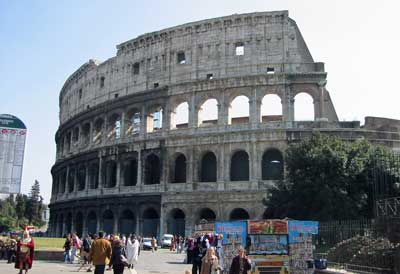
Venice is small enough that you can see the main sights in about 24 hours, and it’s so insanely crowded that many people tire of it after about a day as well. It’s better to pay more for a hotel to be on the main island and visit quickly than to save money with a hotel on the mainland where you’ll be in crowds going back and forth as well. Florence is the most relaxing of the 3, and also a great base for side trips to Pisa, Siena, and Cinque Terre, just to name a few.
Going to Italy? Here are the best first-time Italy itineraries for 3 days to 2 weeks (in much greater detail)
Best add-ons to Italy
- Milan (1 or 2 nights)
- Lake Como (2 nights)
- Siena (2 nights)
- Cinque Terre (1 night)
- Naples/Sorrento/Amalfi Coast/Pompeii/Capri (3 to 5 nights)
- Sicily (3 to 4 nights)
>>>Check Rome hotel deals
>>>Check Florence hotel deals
>>>Check Venice hotel deals
Itinerary 8: Spain
Madrid to Barcelona: 2 hours 30 minutes
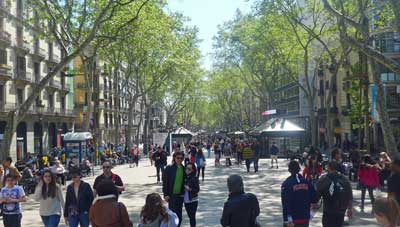
A huge part of Spain’s tourism industry is built around its southern beaches and islands such as Ibiza, Mallorca, and Tenerife (in the Canary Islands). For most people it’s best to ignore those places on your first trip because none of the beaches are special enough to spend days on them compared to the culture of the cities.
Best add-ons to Spain
By popular demand, I’ve added a full article on where to go in Spain with itineraries from 7 to 10 days up to two weeks.
>>>Check Madrid hotel deals
>>>Check Barcelona hotel deals
>>>Check Lisbon hotel deals
Itinerary 9: Germany
Berlin to Munich: 6 hours 2 minutes
Munich to Rothenburg ob der Tauber: 2 hours 56 minutes
Munich to Füssen: 2 hours 4 minutes
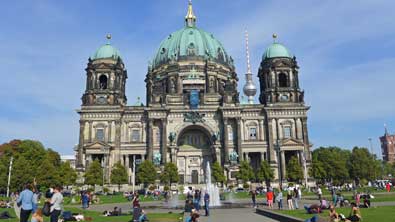
Those two cities are the keys to a Germany visit, and after that you’ve got a wide variety of choices. I cover most of the popular choices in my article on where to go in Germany, which covers several smaller towns that are major highlights.
Best add-ons to Germany
- Cologne (1 or 2 nights)
- Hamburg (2 or 3 nights)
- Amsterdam (3 nights)
- Prague (3 nights)
- Salzburg (2 or 3 nights)
- Vienna (3 nights)
- Interlaken, Switzerland (3 nights)
- Lucerne, Switzerland (2 or 3 nights)
>>>Check Berlin hotel deals
>>>Check Munich hotel deals
Itinerary 10: Switzerland
- Interlaken (3 nights)
- Bern (1 night)
- Lucerne (3 nights)
Zurich Airport to Interlaken: 2 hours 10 minutes
Interlaken to Bern: 53 minutes
Bern to Lucerne: 1 hour 50 minutes
Lucerne to Zurich Airport: 1 hour 3 minutes
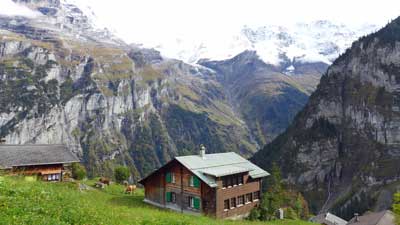
Interlaken is the best hub for the most dramatic Alps views and experiences. The one-hour cable car ride up to the Schilthorn observation deck is something you’ll never forget, and the only thing that might be more dramatic is the train ride up to the Jungfraujoch station, which is the highest in Europe. Lucerne is almost as beautiful with a scenic lake at its heart and also great mountaintop views nearby. If you do want to see a Swiss city then the capital of Bern is the most interesting and photogenic on a short visit. Read more about where to go in Switzerland for even more ideas.
Best add-ons to Switzerland
>>>Check Interlaken hotel deals
>>>Check Lucerne hotel deals
Itinerary 11: Eastern Europe’s best cheap cities
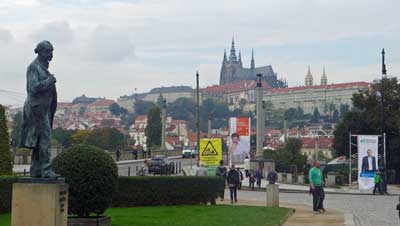
Each of these cities is beautiful and historic, but English is less widely spoken so they can also be quite a bit more challenging for a first-time visitor. Another difficulty is that the trains between them are still quite slow compared to the high-speed rail in the West, so it takes most of a day from one to another, and a bus is often a better choice. I cover this best cheap Europe itinerary more fully in the linked article.
Prague to Budapest: 6 hours 41 minutes
Budapest to Krakow: 9 hours 54 minutes (flying might be better)
Best add-ons to cheap Eastern Europe
- Cesky Krumlov, Czechia (2 nights)
- Ljubljana, Slovenia (2 or 3 nights)
- Split, Croatia (3 nights)
- Belgrade, Serbia (2 or 3 nights)
- Sarajevo, Bosnia and Herzegovina (2 or 3 nights)
- Sofia, Bulgaria (2 or 3 nights)
>>>Check Prague hotel deals
>>>Check Budapest hotel deals
>>>Check Krakow hotel deals


Hi Roger. We’ve got 20 days total and traveling to europe early September. Thinking of doing London, Amsterdam, Prague, Krakow, Budapest, Vienna and Munich.
We are thinking 3 days in each city besides Vienna, where we are thinking 2 nights. I guess my question to you would be in regards to path of travel, and what you think is most effective. So far we’re thinking:
Fly from London to Amsterdam
Fly from Amsterdam to Prague
Overnight train from Prague to Krakow
Overnight train from Krakow to Budapest
train from Budapest to Vienna
train from vienna to Munich
What are your thoughts on this , and if you think we should add/subtract days in any of those cities above, please let us know along with your opinion on best way to transport between each of these cities.
Thank you!
Poursha,
Your plan looks quite good, and if you’ve read any of my itinerary articles you know that I’m a big fan of 3 days in most cities. Two days in Vienna should work well, and that’s probably the city I would have cut a day out of myself. Your route looks to me like the most efficient way of doing these cities, but I will make a couple comments.
First off, you could take the Eurostar from London to Brussels and then change there to a high-speed train to Amsterdam. That takes about 4.5 hours total, which is about the same or maybe a bit faster than flying when you consider the time of going from one city center to the other. It’s definitely more enjoyable than flying, even though the scenery isn’t very interesting along the way. If you buy the train tickets early enough it might even be cheaper, although maybe not. It’s just something to consider and I would take the train if I had the choice.
In general I’m not a big fan of overnight trains, but for the two that you have in mind they are probably the best choice. I encourage you to at least scan that article I linked in the previous sentence so you’ll know what to expect. Still, the daytime trains between those cities are pretty slow and the scenery is pretty bland, so you don’t miss much by going at night. Aside from those comments I think your plan looks great and I’m sure you are going to have a fantastic time. Let me know if you have any other questions. -Roger
Hi Roger,
I am from Mumbai and planning a trip with my parents next month to Europe [ starting on 11th and ending on 17th]. I know it’s a very short time but, that’s about the time we get in the whole year.
We had been to France and Switzerland on our first trip back in 2012 in a similar time frame and It was very hectic as it involved a lot of travel.
I was looking at a few options you have listed i.e. UK & SCOTLAND for 7 days or Spain & Portugal for 7 days or Only Italy .
I know August is the peak tourist season so will it be a good time to visit any of this options?
Or do you have any other suggestions? We are happy with covering only 2 cities over the course of the trip but shouldn’t involve a lot of travel.
Kindly suggest an itinerary .
Ashwen,
A week in Europe is far better than no time in Europe. August is the peak month in all of the beach towns and in London as well, but it’s actually somewhat quiet in Paris and Rome (because so many locals are elsewhere and offices shut for the month).
I’d say your best 3 options would be the ones you already mentioned. Since you are from Mumbai then any of the options will feel fairly cool to you. But of course the UK will actually be a bit chilly if that is what you are looking for (highs around 20C, or even a bit cooler in Scotland).
So I’d recommend one of these:
London for 3 or 4 days then Edinburgh for 2 or 3 days and perhaps Inverness for a day or two. That would be nice, but including Inverness would mean a couple more days of travel in that week. If you want to mix a big city with a smaller one you could do London and then York or Bath instead.
Spain is usually hot in August, and Barcelona is pretty crowded as well. The best week there would be 3 days in Barcelona, and 4 days in Madrid, which would include an easy day trip (one hour each way) to Toledo.
The best one-week Italy trip is one full day (24 hours if possible) in Venice and then 3 nights in Florence and 3 nights in Rome. That obviously requires those two train rides in addition to getting back to your departing flight, but those train trips are only 90 to 120 minutes each on fast and modern trains so I don’t think they will be a problem.
Those are some ideas to consider and I’ll be happy to help with more information as you are narrowing down your choice. -Roger
Hi Roger,
I was thinking about going to europe for 7-10 days in a few weeks for the first time. I am unsure of where to go and how many cities/countries i should visit as i do not want to be short in time. If you were to go to europe for the first time, what would you recomend for me?
Thanks
Of course i read the article, but all places being new, i cannot tell which would be the best for me.
Gabriel,
It’s interesting that I wrote the article above because I kept getting questions about this topic on another article I wrote a few years ago about Europe’s 5 great cities that you should first focus on. So now I will refer you to that one as I think it will help you get your planning started. The short version is that I highly recommend London, Paris, Amsterdam, Rome, and Venice as cities to build your first trip around because they are each very different and each amazing.
But also as I mention in the article above, I think it’s best to spend 3 nights in almost any city you visit, and 4 nights can be better in the larger cities such as London and Paris. So if you have 7 to 10 days I’d recommend London and Paris to start with (connected by the very convenient Eurostar train). And if you are staying for 9 or 10 days you could also take the high-speed train from Paris to Amsterdam to stay 2 or 3 nights there.
The other option that anyone would love would be to just spend your whole 7 to 10 days in Italy and save the others for your next trip. You can spend 3 nights or even 4 in Rome and then 3 nights or so in Florence and then a night or two in Venice. Each of those is very different and endlessly fascinating. Hopefully at least one of these ideas sounds like a good foundation for your trip. Let me know if you have any questions. -Roger
Hi Roger, I planning to visit the Europe for 20 Days in middle of November this year, Where would you recommend us to go? London and Paris is in our list!
See Kai,
Interestingly enough, earlier this year I started a new series that recommends the best cities in Europe (and Asia) for each month of the year. The first one I did was for February, and I’ll be publishing the best Europe destinations in November article this coming week. So if you check the homepage in a couple days you will see it there. But for now I will direct you to the best Europe destinations in February, which will be a very similar list.
November will be a bit warmer than February, but still the lists will be similar because in either month you generally want to focus on the most famous cities such as London and Paris and Rome, as well as the better cities in the south of Europe such as those in Spain, Portugal, and elsewhere in Italy. So if you have 20 days I’d start with 3 or 4 days in London and then 3 or 4 days in Paris. Then set aside at least a week for Italy. You could easily do 12 or 13 days in Italy without getting bored, but you might instead want to visit Madrid and Barcelona or something along those lines. Have a look at that February article and remember that the temperatures in November will be a bit warmer in all of the places. I think that will give you several interesting ideas for places to add to London and Paris. Let me know if you have any other questions. -Roger
Hi Roger,
I’m planning a 3 week trip round Europe with a 4 year old and a 11 month old baby, considering Spain or Croatia. Where would you recommend we go and possibly travelling via camper van.
Many thanks, Louise
Louise,
It depends a bit on when you are going. Spain gets very hot in summer and I’m not sure it would be comfortable in a camper van. But if you are going in September or later it would probably be very nice. Still, I think Croatia would probably be nicer for that kind of trip and especially in a camper van. The coastline is really lovely and it’s more scenic than most of Spain. Also, you’d want to visit Plitvice Falls National Park in Croatia, which is one of Europe’s most beautiful sights.
Slovenia is also a beautiful country with Lake Bled and the Karst mountains. Bosnia and Herzegovina is another country you might want to explore. The Sarajevo area is really nice and quite interesting, and Mostar is as well. The southern Spanish coastline is kind of dull by comparison, although I believe that the northern coast has quite a bit to see. I hope this helps. -Roger
Hi Roger,
The information that you provide is really useful, but I have some questions. I’m a student who is studying abroad in Germany. My family will be having a trip at the end of September till October for about 16days in Europe. I’m not good with planning trips. For now, my current plan is as below: Germany( Bonn, Cologne, Dusseldorf) for 4 days, Netherland (Amsterdam) for 5 days, Belgium (Bruges for 3 days and Brussels for 1 day), Paris for 3 days. Do you think I’m spending too much of time in a city? Do you have any recommendation or some advice for the trip?
Thank you
Ian,
This is an interesting question. I have a lot of family in Germany, including a brother who currently lives there, so I’ve been all over the country. In my opinion, Cologne is an interesting city, but the main draw is the cathedral and the historic district surrounding it. You can see all of that in one day or two days at the most. And Bonn and Dusseldorf are examples of modern cities that are mostly new and are really known more for business than for tourism. If you are already in this area then I’m sure they would be interesting places to visit, but otherwise they aren’t very memorable. You might actually be interested in my article on where to go in Germany, as I discuss a few alternatives.
I’m a huge fan of Amsterdam and I even lived there for a while. Still, it’s kind of a small city and I’d think that 3 or maybe 4 days would be enough. Bruges is much smaller and two days would probably be enough, but it’s very pleasant so I’m sure 3 days would be enjoyable. Brussels in one day sounds good, and you might even think about spending only an afternoon there. The area around the main square (Grand Place) is really lovely, but it’s small and the rest of the city is built more for government employees and business people.
If you have more time to allocate I’d say that a 4th day in Paris would be worth it. To me, Paris and Amsterdam are 2 of Europe’s 5 great cities to focus on, along with London, Venice, and Rome.
You might also consider a few days in Switzerland if you have the time. The scenery there is the best in Europe. And Salzburg is another to consider at some point. I hope this helps. Let me know if you have any other questions. I love travel planning and I’m happy to help more if I can. -Roger
Hi Roger! I am planning a trip to Dubai to visit my brother and his family this December and I am very tempted to might as well visit some Europe cities for 2 weeks with my mum. We are travelling from New Zealand since my workplace shuts down (for holiday season) for at least 2 weeks this is the best time to travel. But I am having second thoughts as it is winter season in Europe, i don’t want to spend a lot of money (so budget is average) but want it comfortable because my mum is on her early 60’s. Can you suggest an itinerary If we push theough its gonna be from January 19-February 3. Your advice will be greatly appreciated. Cheers!- Monali
Monali,
Early this year I started a new series that highlights the best European destinations for each month of the year. The first one I did was best Europe places in February, and I think that should help you get a start. The bottom line is that in the winter like that you either want to focus on the places in the south that don’t get as cold, as well as the truly great big cities that are still bustling in winter such as London and Paris. I would put less focus on the more eastern cities such as Krakow or Prague that time of year, because it can be quite bitter outside and less fun.
You can’t really go wrong with Italy either, as it’s reasonably warm in winter and it’s still busy enough to be fun that time of year. Hopefully that list at least helps you get some ideas. I’m happy to offer further advice if you have more questions along the way. -Roger
Hello Roger!
I’m going to Europe in March 2018 and will be there for 20 days. I’m flying into Paris but will travel elsewhere. My plan is to go to London, Brussels, Berlin, Rome (or another city in Italy), and Barcelona.This seems like a bit much but I don’t know where to cut my trip short. What is your suggestion?
Thanks in advance!
Joanna,
If you have 20 days I would plan for 6 or 7 cities total. From Paris you can take the Eurostar to London and then again to Brussels. It’s fast (2 to 3 hours) and tickets are reasonable if you book at least a few months in advance.
From Brussels the train to Berlin takes just over 7 hours, and to be honest the route is flat and pretty boring. It would be a bit faster to fly, and probably a bit cheaper as well. But the train would still be more enjoyable. After hundreds of European train rides, 7 hours is right around my limit as to when it starts to feel like a drag. If it were me I’d still take the train, even if it’s a bit more expensive, but flying would be a bit faster.
Since Berlin is not close to Rome or Barcelona, it would really be best to fly for the rest of the trip. Those flights will be quite cheap that time of year, especially if you book very early (3 months or more in advance). There is a high-speed train from Barcelona in 6.5 hours for your way back to your flight home. I think those 6 cities in 20 days would be ideal. I’d do 4 nights in London and 4 nights in Paris. You could do Brussels (or even Bruges, which I prefer) in 2 nights. If you are going to pick exactly one Italian city for your first visit, Rome is the best choice and I’d spend 3 days there. Let me know if you have any other questions. -Roger
Hi Roger,
That was prompt and very helpful. Gives me a good idea to get started. Thanks a lot. 🙂
Hi Roger,
Delighted to see the details you provide. My husband and I are planning to travel to Europe from 14th Sep to 1st Oct this year. We wish to visit the following cities but are not sure if it will be a bit much.
1. Italy (Rome- 4 nights, Venice 1-2 nights, Florence-2 nights)
2. Paris 3 nights
3. Vienna 2 nights
4. Praque 2 nights
5. Swiss Alps (can we do a day trip from one of the destinations?
Could you help us with the following:
1. If we have to miss one or two places, can you suggest the ones where we dont waste too much time in travel?
2. Which countries would be ideal for the dates that we plan to visit?
3. Are there any other places that are ideal for a visit during our travel dates and must be included in the itinerary?
4. Are Salzburg and Inssbruck worth a visit and similary any other places in Czech that are not to be missed?
Thank you in anticipation 🙂
Parinitha
Parintha,
You can visit the edge of the Alps in Italy, Austria, Germany, or France. You could even go to Salzburg from Vienna. But to really see the most impressive Alpine sights and views, you need to get to the Interlaken area of Switzerland, which is impossible to do as a day trip from another country.
1. Prague is rather out of the way from the other places on your list, so if I had to save one stop for a future trip, it would be that one. That said, I prefer Prague to Vienna because Prague is more fun and Vienna is more formal.
2. The second half of September is nearly perfect for every place in Europe except the Nordic countries. In fact, I just posted an article yesterday with my best Europe destinations in September recommendations, and it includes all of them on your list. I wrote notes about September for each place so you might find it interesting.
3. Again, you could go anywhere, so the weather won’t be an issue.
4. Salzburg is a wonderful tourist city for its views and historic town center. Innsbruck is kind of dull and it’s really just a ski resort town with almost no worthwhile sights.
Let me know if you have any other questions. -Roger